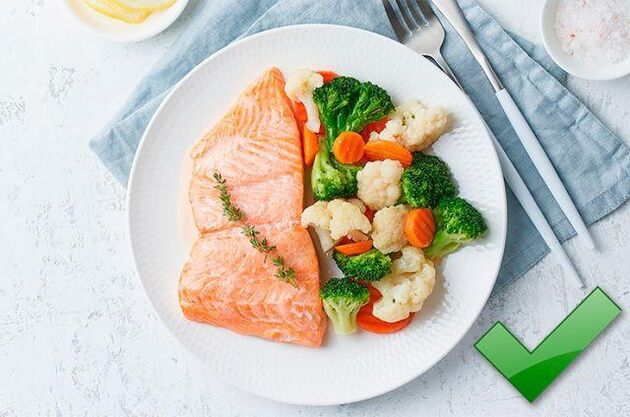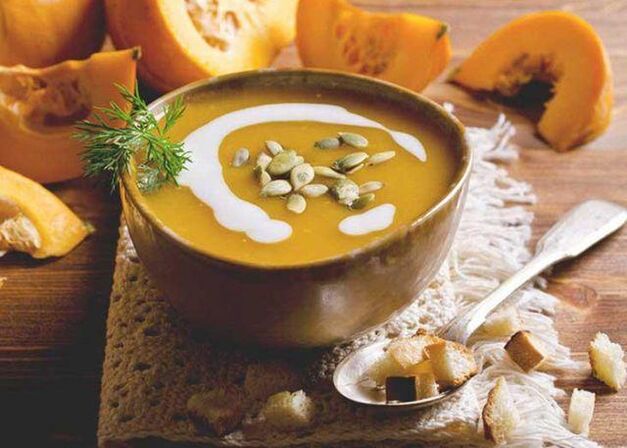
This unpleasant and even dangerous disease is considered the most popular pathology of the gastrointestinal tract among modern people. Most often, it is due to a violation of the diet, but the wrong products themselves can lead to its development. Diet against gastric gastritis is as important as drug treatment, and sometimes this is almost the only way to normalize the work of the gastrointestinal tract and prevent the disease from progressing to a more dangerous and / or painful form.
What is gastritis?
Gastritis is an inflammatory process that develops in the gastric mucosa. Due to its improper functioning, the digestive process is disrupted, various negative effects occur, and the mucous membrane itself gradually thins.
The cause of the disease can be many different factors that are not alien to a modern, constantly busy person. Rushing during meals, grabbing and chewing hot or cold food, eating poor quality or unhealthy food, fast food, fatty, salty and unlimited amounts of smoked food, systematic nutritional disorders - all these can cause gastritis. In addition, insufficient amount of protein and vitamins in food, long-term use of certain drugs, constant stress, smoking and excessive alcohol consumption without thinking become risk factors.
Dietary guidelines for gastritis
Proper nutrition plays a big role in the treatment of this disease. It is very important to know the rules and follow all the intricacies of the diet for gastritis with high or low acidity drawn up by the doctor. You will have to follow a few simple and clear rules:
- All food should be chewed well, food should not be swallowed in parts.
- It is recommended to organize your daily work and eat according to the clock. Ideally, meals should be fractional and portions should be small. It is better to eat 5-6 times, in portions of 200-250 grams, than 500-600 meals three times.
- There should be 2. 5-3 hours between meals, and if possible, it is better to make the intervals the same.
- Food should always be warm, neither hot nor cold. The wrong temperature irritates the walls of the stomach, causing more inflammation.
- You should stop eating raw foods. Even when it comes to vegetables and fruits, it is better if they are treated with heat.
In addition, it is very important that the products are always fresh, cooking for future use with gastritis is undesirable and even dangerous.
What can you eat with gastritis?

- Stale bread, baked goods and pastries in general.
- Boiled, steamed, boiled or baked (unpeeled) vegetables.
- Porridges from crushed grains in milk or water (rice, oatmeal, semolina, buckwheat).
- Low-fat fish species.
- Unfried lean meat and poultry (chicken, turkey, rabbit, veal).
- Non-acidic fruits, dishes from them (apples, bananas, pears).
- Low-fat milk and dairy products (up to 1. 5%).
- Vegetables and butter (no more than 20-30 grams per day).
- Pastila, marshmallow.
- Natural honey (40-50 grams).
- Steamed eggs, as part of dishes or boiled (2 pieces per day).
It is very important to follow the correct drinking regime for gastritis. It is necessary to consume 1. 5-2 liters of liquid per day, including juices, compotes and even soup. It is permissible to drink mineral water with suitable composition recommended by the doctor.
What not to eat with gastritis
- Smoked meat and sausage.
- Sausages and sausages.
- Roast.
- Fatty meat and fish.
- Sour fruits and berries.
- beans.
- Fresh vegetables that have not been subjected to heat treatment.
- Preservation and pickling.
- Fatty and sour dairy products.
- Barley, millet, unmilled cereals.
- Pasta, macaroni and vermicelli made from whole wheat flour.
- Fresh pastries and bread.
- Mushrooms.
- Nuts and seeds.
- vinegar.
- Hot spices and sauces.
- Strong coffee, tea, carbonated drinks.
- Alcohol.
Diet number 1 for gastritis: principles and sample menu

Such a nutritional system is recommended for people suffering from acute gastritis. A similar sparing regimen is prescribed for those with gastric or duodenal ulcers. The principles and rules are the same as above. In addition, doctors recommend reducing salt intake, because it not only retains fluid in the body, but also irritates the mucous membranes. In this mode, the standard amount of calories should not exceed 2800-3000 calories per day. To better understand the issue, let's look at the sample menu for the day:
- Breakfast: rice porridge with milk, soft boiled egg, weak tea with milk.
- Snack: sweet apple cooked with honey or sugar.
- Lunch: vegetable cream soup, steamed turkey meatballs or meatballs, mashed potatoes with milk, non-acidic fruit mousse.
- Appetizer: croutons, rose broth.
- Dinner: stew from vegetables allowed, fish allowed, cooked with milk, weak tea with milk.
- Snack before going to bed: banana, milk.
Diet for chronic gastritis
When the disease becomes chronic, dietary restrictions are vital for the patient. By following a diet, you can significantly improve the quality of life and prevent acute attacks of the disease. The menu may be slightly different for different degrees of acidity, so it is worth talking about each case separately.
Nutrition for chronic gastritis with low acidity
The stomach begins to produce an insufficient amount of hydrochloric acid, food is digested worse. The body cannot extract all the nutrients and trace elements it needs from it. Not only the mucous membrane of the body, but also all the systems of our body can suffer from this.
Principles of diet
- Mashed, liquid and mashed foods are preferred.
- Acceptable consumption of acidic foods.
- During the period of remission, you can eat fried foods in small amounts.
- The temperature of food can vary between + 15-60 ° C.
- The total calorie content of the daily diet should correspond to 2500-3000 calories.
Permitted and prohibited products
It is not difficult to make a menu with gastritis with low acidity, because it consists of a wide variety of products. The consumption of meat, sausages, sausages and sausages, pastries and bread, fish, vegetables and fruits, and various cereals is allowed. It will be possible to include juices, compotes, kissels, broths, tea and coffee, milk and lactic acid products in the menu.
However, there are also restrictions, for example, you will have to give up very fatty foods. It is undesirable to consume goose meat, pork, salmon, fried donuts, cream sweets and sweets. Fermentation and flatulence should not be activated from eaten vegetables, so it is better not to eat cabbage, beans, grapes, onions, garlic. Milk in its pure form is also not recommended, but it will fit perfectly as part of meals or as an addition to tea or coffee.
Nutrition for chronic gastritis with high acidity

With this type of disease, the stomach begins to produce an excessive amount of acid, which seems to "digest" the surrounding tissues, causing more and more damage to the mucous membranes. Therefore, the menu should be more economical than in the previous case.
Principles of diet
- No spicy food. Everything that can irritate the mucous membranes is immediately swept away.
- Products should be low-fat only.
- Fried food is completely excluded, all food should be boiled, steamed or baked.
- It is better to puree the products and wipe them before use.
- Meals should be prepared often and in fractions, portions should be small.
- Daily salt intake can be increased up to 8 grams.
- Daily calorie intake should be in the range of 2200-2500 calories.
Permitted and prohibited products
The goal of the diet for such a disease is to make the menu as economical as possible, but at the same time diverse and nutritious. As in diet number 1, it is necessary to eat only boiled, steamed and baked vegetables and choose only non-acidic fruits. They should also be boiled and ideally pureed. It is allowed to consume lean meat and fish, it is also desirable to grind them carefully.
Sour milk with increased acidity is prohibited, but dairy products should be in the diet. Porridges are lightly cooked, removed if necessary, only weak meat broths are used for soup. It is better to refuse pickles, borscht, cabbage soup, okroshka and other sour foods.
Diet for acute gastritis

Acute inflammation of the gastric mucosa can often be accompanied by severe pain and nausea. This stage requires urgent medical examination, lifestyle changes and dietary changes. On the first day, it is better to completely refuse solid food, even pureed food, and limit yourself to drinking warm water or light tea.
Until the second day, you can slowly consume the foods on the diet list number 1. Then you can make soups with excess liquid, paste or cream, low-fat fish or meat puree, boiled soft-boiled eggs. Fresh vegetables and fruits, as well as other products from the prohibited list, should not be consumed.
Diet for erosive gastritis
This type of gastritis is dangerous due to the formation of ulcers on the mucous membrane, which can quickly turn into full-fledged ulcers. To stop the symptoms and minimize the negative consequences, you must strictly follow the nutritional rules:
- No fried, salted or smoked food, all food is only boiled, steamed or cooked without skin.
- Eating fractions in small portions 5-6 times a day. The maximum weight of one meal is 170-180 grams.
- It is customary to drink a glass of warm water before eating.
- Foods with sauces, hot spices, mayonnaise, flavor enhancers are completely excluded.
- Eat slowly, chewing each bite thoroughly.
- All food should not be hot, cold or hot.
The last meal should be set so that it remains 2 hours before bedtime.
Diet for atrophic gastritis
Diet is the most important factor in the treatment process for atrophic gastritis. Food is best taken at the same time regularly. Otherwise, you should follow the same recommendations as already sounded for the power supply system table No. 1. You can consume all the products on the list of allowed products and refuse the prohibited ones.
Food is eaten hot, mashed, steamed, boiled or baked. Fried and fatty, as well as sour, spicy and salty foods are prohibited. Tobacco and alcoholic beverages are considered the main enemies of all types of gastritis, so it is better to leave them forever in order not to cause an acute condition.






























